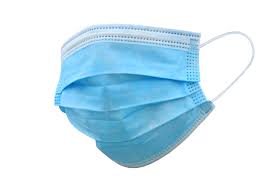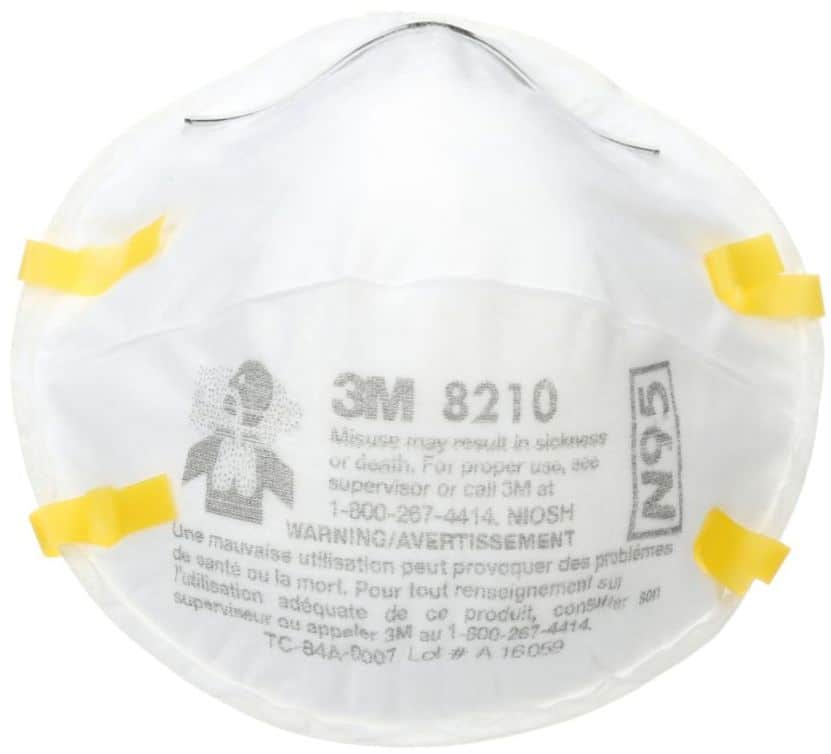Surgical Mask vs N95 Respirators
Table of Contents
ToggleSurgical Mask vs N95 Respirators
Surgical Mask vs N95 Respirators are complete opposites of each other. Respirators are worn to protect you from what ever substance or material you're working with that has the capability of being inhaled and causing you injury or worse. Surgical masks have gaps and offer little to no protection at all. They're for others protection from you. A great example is a surgeon in an operating room. That doctor does not wont any of they're bio fluids from the mouth or nose to drip or be spayed into the opening exposed area of the patient.
Surgical Mask 
Surgical Mask Protection is a False Sense of Safety. These are not respirators. Yet they are being worn by a huge number of people walking in the cities. The truth is, these people are uninformed and believe that wearing a surgical mask will protect them from catching any virus. Prior to the COVID-19 pandemic, the ones who we see wearing a surgical mask did so with the notion it was a barrier preventing vehicle exhaust and other pollutants from being breathed in. That conception is completely false. I also find it is culturally related, and being worn by all generations.
False Sense of Safety
A False Sense of Safety is believing in Surgical Masks are Protection. As well believing you're protect from becoming infected with COVID-19 or any other virus. In fact, that false sense of safety might tend to allow you to be in a higher risk environment. That in turn could result in you becoming infected with the virus. This is not a new idea at all. Prior to the invention of the car, cowboys riding horses work a bandana over their mouth and nose to protect against the dust. Like the western bandana, a surgical mask has to many open gaps. There is no direct face seal. Your protection from being infected is zero when relying on these masks.
Why Wear a Surgical Mask
Why Wear a Surgical Mask? The answer is in the name of it self, Surgery. As already stated, when a doctor is performing a medical surgery on a patient, they wear one of theses masks. The reason being is, an operating room is a sterile environment. When a patient is undergoing an operation, the skin is opened up. The surgical mask is worn by all medical personnel so any bio matter from a cough, sneeze, or just breathing out does not infect the patient. For that exact same reason, these masks are placed on sick patients in a hospital to acted as a barrier from infecting others.
The American Lung Association stated:
A cough can travel as fast as 50 mph and expel almost 3,000 droplets in just one go. Sneezes win though—they can travel up to 100 mph and create upwards of 100,000 droplets. I personally would want to wear on of the many respirators out there.
What Comes Out When Coughing or Sneezing
Using high speed cameras from 1000 to 4000 frames per second, a study called Violent expiratory events on coughing and sneezing was conducted by The Department of Mathematics and the Department of Civil and Environmental Engineering, Massachusetts Institute of Technology, Cambridge, Massachusetts. Being difficult to understand some of the scientific language, the study into the Violence and Turbulence of a cough or sneeze was very informative. Found on YouTube a video explaining the study was found. Warning - some of the imagery is very disgusting.
COVID-19 Pandemic
The COVID-19 Pandemic is a unique virus itself. The New England Journal of Medicine said in a blog report, Scientists have already used electron microscopes to measure how big the corona virus is. Coronavirus virions (or ‘particles’) are spherical particles with diameters of approximately 125 nm (0.125 microns). The smallest particles are 0.06 microns, and the largest are 0.14 microns. To put the sizes into perspective, a human hair is 100 microns thick. Can you imagine now how small the COVID-19 Pandemic virus is at .125 microns. The human hair is 100 times larger measuring the thickness as a height.
What our Current Respirators can Filter
From the number above, the N95 Dust Mask might not be sufficient to protect from COVID-19. The breakdown of a N95 disposable mask is this, "N" refers to Not Resistant to Oil, and the 95 means the mask will capture 95% of particles that are 0.3 microns or larger. As for the P100 HEPA Filter cartridge, these are disposable as well. However, the respirator is reusable once cleaned. P100 are the best HEPA filters. The ones shown about fit North 7700 respirators. "P" referring to Oil Proof and the 100 mean the filter will capture 99.97% of particles or viruses up to 0.3 microns and large. Still, to ensure a perfect face seal, you'll need to be fit tested
New Belief
With all that being said, what's your belief now on Surgical Masks ? Will you trust it, or purchase one of many styles of a respirators on the market today. Please comment below.



